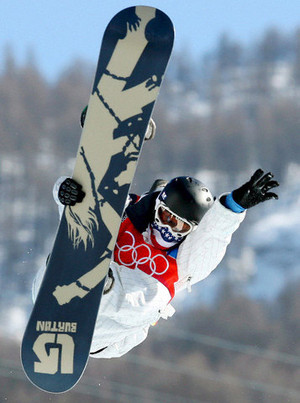Olympic Snowboarding History
Updated by Admin | December 06, 2012
Have your say join our Snowboarding Forum
Snowboard Information Articles

- Olympic Snowboarding History
A relatively new sport on the Winter Games register, snowboarding was already making leaps and bounds in terms of popularity since the 1980s but only became part of the Winter Olympics in 1998, held in Nagano, Japan.
However, snowboarding's bid to be part of the Winter Olympics was marred in controversy, with many riders expressing their anger at the International Olympic Committee's decision to give the jurisdiction of the event over to the International Skiing Federation rather than the International Snowboarding Federation, who were already sanctioning snowboarding events long before snowboarding was included in the Nagano Games. The decision caused ripples of disappointment among riders and supporters alike.
Voicing their opposition in particular was Norwegian champ Terje Hakonsen, who claimed he would boycott the 1998 Winter Olympics and other events after it while the decision was in effect.
Controversy also dogged the Nagano Games when Canadian rider Ross Rebagliati won gold, but was later stripped of the medal three days later when he tested positive for marijuana. Spokesmen on Rebagliati's behalf gave the colourful claim that he had in fact inhaled secondhand smoke during a send-off party, which actually resulted in the IOC reversing the decision and returning the medal back to Rebagliati, ruling that marijuana was not a performance-enhancing drug.
We at Devil Street Wear would also like our fans to know that we definitely do not condone the use of drugs on the slopes and to not follow Rebagliati's example. Awesome riders don't use drugs.
At the moment, there are six different Olympic snowboarding events: men's and women's parallel giant slalom, men's and women's snowboard cross and men's and women's halfpipe. The halfpipe and parallel giant slalom in particular were the only original snowboarding events in the Winter Olympics until snowboard cross was later introduced during the 2006 Winter Olympic Games in Torino, Italy.
Halfpipe snowboarding, in terms of style, can be traced back to, of course, skateboarding, where riders move across from one side to the other inside a U-shaped bowl (or halfpipe), making jumps and performing tricks mid-air.
Parallel giant slalom, on the other hand, involves the top 16 riders battling it out in two face-off matches in a bracket format, for example, Rider 1 battling Rider 16, Rider 2 battling Rider 15 and so forth. Riders battle it out until there are two left standing for the final match.
The snowboard cross event, meanwhile, consists of four riders racing to the finish line and can be quite difficult due to the different obstacles they have to pass though, as well as the track being narrow which can make it difficult to control your board, resulting in many crashes during these events.
As snowboarding has become more popular and the Winter Olympics now a prestigious event, things are looking pretty good for the sport overall with the best still yet to come.
Have your say join our Snowboarding Forum
We hope you enjoy the free infomation as well as the product and website reviews.